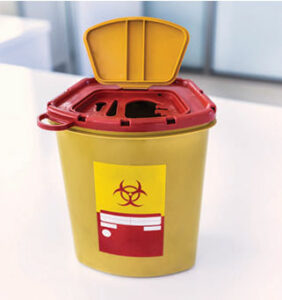Preventing Needlestick Injuries Remains Key to Workplace Safety
Twenty years ago, the Needlestick Safety and Prevention Act was passed into law.

Twenty years ago, the Needlestick Safety and Prevention Act was passed into law. The legislation mandated that the Occupational Safety and Health Administration add new protections to its Bloodborne Pathogens Standard to prevent employees from exposure to blood and/or bodily fluids.
The new protections included:
- Guidelines for evaluating and using engineering controls
- Emphasis on implementing devices to improve safety and decrease exposures
- Requests for employee experiences using such devices
- Addition of a sharps injury log
These guidelines helped to significantly reduce sharps injuries in the American workplace, and their use in combination with personal protective equipment has helped to improve workplace safety.
Helene Bednarsh, BS, RDH, MPH, public health advocate and infection control expert, comments, “The Needlestick Safety and Prevention Act is important because safety devices, as engineering controls, are essential tools in minimizing the risk of a percutaneous exposure. Having this codified prompted the dental industry to develop instruments that met the criteria for safety such as blunt sutures, retractable devices, and more.”
While sharps injuries have declined, they still exist, posing a threat to all healthcare providers, including oral health professionals. As such, employers, workers, and manufacturers need to continue to create innovative solutions to further reduce these risks.
From Dimensions of Dental Hygiene. January 2021;19(1):11.

